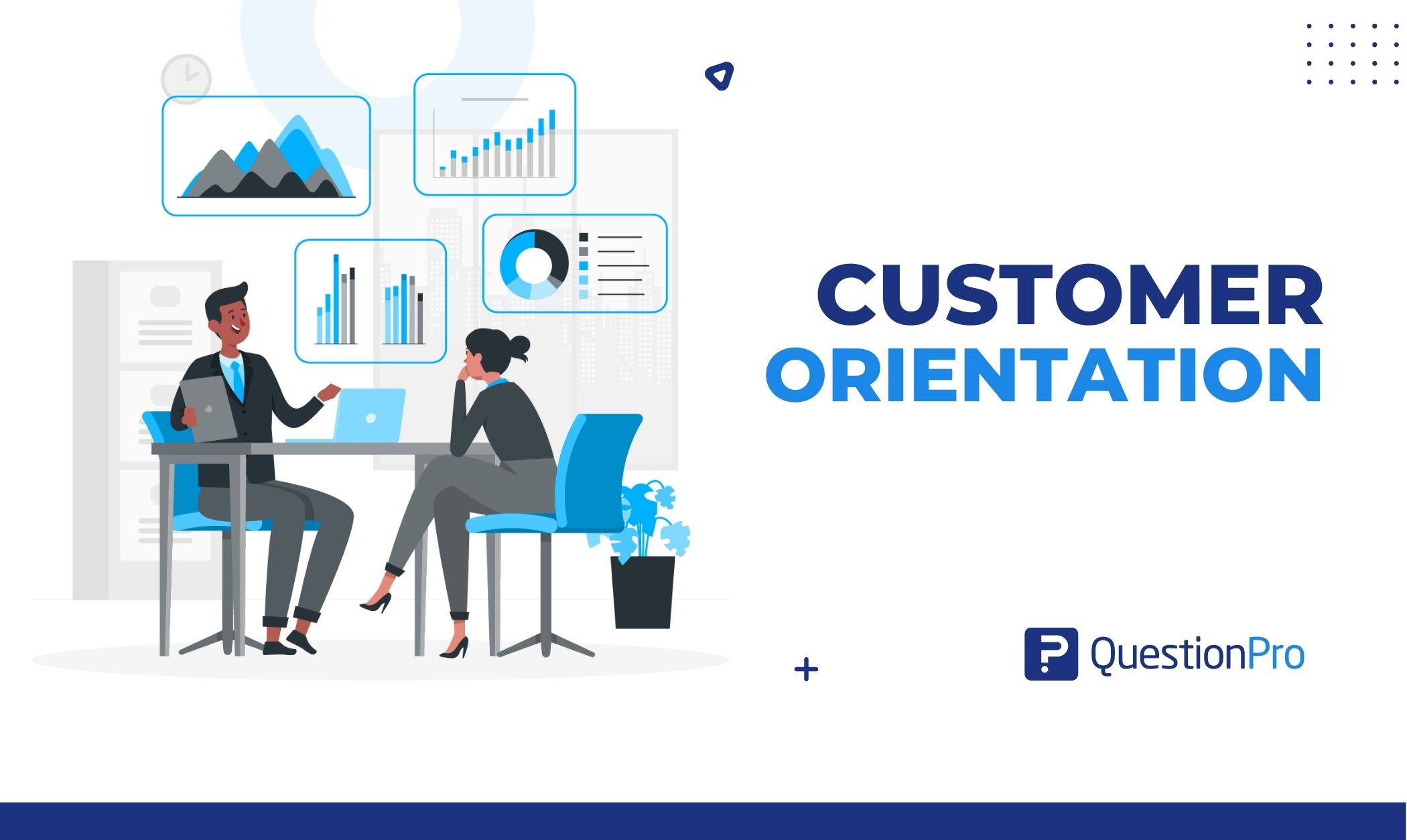
The success of a business is determined by its customer. Without customers, there would be no sales or revenue, and the company would shut down. This means prioritizing your customers is common sense and a good business strategy. This is the time when customer orientation comes.
Building a customer oriented culture throughout your organization entails making your customer experience (or CX) positive and incorporating it into your company’s principles, strategies, and goals.
LEARN ABOUT: Perfect Customer-First Strategy
In this blog, we will discuss customer orientation and give you a complete guide for better understanding.
What is Customer Orientation?
Customer orientation is a business strategy that recognizes that customers are the business. You cannot create anything of value unless you can successfully recognize and meet your customers’ needs.
A customer-oriented business is more than just providing excellent customer service. It is about putting the customer’s needs at the center of every business decision.
From the smallest details of product or service design to after-sales support, the goal is unrivaled customer support. Businesses that map their customers’ needs to their goals are more likely to succeed.
Importance of Customer Orientation
The importance of customer orientation in today’s business landscape cannot be overstated. It is a fundamental concept that underscores the success and sustainability of any organization. Here are several key reasons why customer orientation is of paramount importance:
Enhanced Customer Satisfaction:
A customer-oriented approach prioritizes understanding and meeting customers’ needs and expectations. Customers’ satisfaction increases When they feel heard and valued, leading to repeat business and positive word-of-mouth recommendations.
Improved Customer Loyalty:
Customer orientation fosters solid and long-lasting relationships with customers. Loyal customers are likely to continue doing business with you and are less inclined to switch to competitors, reducing customer churn and increasing customer lifetime value.
Competitive Advantage:
Businesses that excel in customer orientation in a crowded marketplace stand out. They can differentiate themselves by providing an excellent customer service team and tailoring their high quality products or services to meet one customer demands, giving them a significant competitive advantage.
Innovation and Adaptation:
Customer oriented feedback and insights gathered through a customer oriented strategy approach are invaluable for innovation and adaptation. By understanding the needs of customers, businesses can refine their offerings and stay ahead of changing market trends.
Brand Reputation:
A customer-centric approach contributes to a positive brand reputation. Businesses committed to customers are often seen as trustworthy, ethical, and reliable, which can attract more customers and partners.
Increased Profits:
Satisfied and loyal customers tend to spend more, making them a more profitable business segment. Additionally, retaining existing customers is often more cost-effective than acquiring new ones.
Risk Mitigation:
By staying attuned to customer feedback, businesses can identify and address issues proactively, reducing the likelihood of costly customer complaints or public relations crises.
Adaptation to Changing Markets:
Markets and customer preferences are constantly evolving. A customer-oriented business is better equipped to adapt to these changes, ensuring their long-term relevance.
Customer orientation is not merely a business strategy but a fundamental ethos that should permeate every aspect of an organization. A commitment to understanding, serving, and delighting customers drive growth, profitability, and sustainability. In an era of continually rising customer expectations, those prioritizing customer orientation are best positioned to thrive.
Implementing Customer Orientation in Your Business
Customer orientation in business requires careful planning involving top management and frontline employees. Here are five ways to begin putting your customers first:
Develop a detailed customer persona
Your business can serve customers much better if it focuses on a particular type of customer rather than a large market. Creating detailed customer personas allows you to understand better your customers’ wants, interests, and pain points.
You can create more meaningful solutions by gathering demographic information, behavioral practices and attitudes, motivations, customer needs, and goals from your target users.
Recruit empathetic people
Hiring the right people for your company is easier than training them from scratch. While they can be groomed to fit better into your company, certain characteristics are inherent.
For example, if you hire an empath to work as a frontline employee in your company for sales teams or customer service agents, they will help customers intuitively. To be customer-focused from the start, pay close attention to the support team you’re building with each employee you hire, making sure they’re an excellent cultural fit from the start.
Give employees the proper tools and training
Your employees’ tools and training must also foster positive customer relationships and customer experiences. Customers, for example, may find single-channel customer service oriented frustrating.
A customer who prefers live chat services is likely to be dissatisfied with phone service, regardless of how polite or well-intentioned your agent is on the phone. A customer oriented company that cares about its customers will equip its employees with everything they need to provide an exceptional experience for exceptional customer service.
Engage your customers proactively
If there is one thing that businesses must be prepared for, it is their changing preferences. They are constantly evolving. Keeping up with these changes is what customer orientation is all about.
A customer focused company that is committed to providing the highest level of customer satisfaction will actively engage its customers to understand this shifting curve. Whether through feedback surveys or tracking website hits, analyzing chats, and engaging with customers to stay on top of their changing needs.
Pay attention to company employees
When you are customer-focused, it is easy to overlook the people who are in charge of providing the customer experience: your employees. Customer satisfaction depends on employee happiness. Treat your employees well and set a good example for how you want your customers to be treated.
Customer Oriented Skills
In the business world, customer oriented skills are essential for building lasting relationships and thriving in competitive markets:
Customer Oriented Companies
- Market Research: Regularly studying customer preferences and trends.
- Adaptability: Swiftly responding to changing customer demands.
- Customization: Tailoring products to meet specific customer needs.
- Reputation: Establishing a reliable brand image through consistent customer satisfaction.
Customer Oriented Teams
- Empathy: Customer empathy means understanding and resonating with customer concerns.
- Communication: Promptly addressing customer questions and issues.
- Problem-Solving: Analyzing complex problems for innovative solutions.
- Collaboration: Providing a holistic customer experience across departments.
Customer Service Orientation
- Active Listening: Engaging with customer inquiries and feedback.
- Patience: Remaining calm in challenging interactions.
- Product Knowledge: Offering accurate guidance.
- Conflict Resolution: Effectively resolving disputes.
Building Long-Term Relationships
- Consistency: Providing a trustworthy experience.
- Anticipation: Addressing needs before they become issues.
- Value-Add: Offering extra value through loyalty programs and perks.
By nurturing these skills, you can create a business that attracts and retains customers, fostering long-term success.
How To Implement Customer Orientation With The Help of QuestionPro CX?
QuestionPro CX is a powerful tool that can assist you in implementing customer orientation in your business by gathering and analyzing customer oriented feedback. Here are some steps you can take with QuestionPro CX to implement customer orientation:
Create a customer feedback program:
Start by developing a program that will enable you to gather customer needs and feedback. This might take the form of a customer survey, a feedback form on your website, or a chatbot that customers can use to give feedback.
Define your customer personas:
Before you begin collecting feedback, you must first define your customer personas. These are the various types of customers you serve, each with its own set of needs, preferences, and pain points.
Collect feedback:
To get feedback from your customers, use QuestionPro CX. To collect customer insights, you can create surveys, feedback forms, or other types of feedback mechanisms.
Analyze feedback:
Using QuestionPro CX to analyze the data after collecting feedback. You can use various data analysis techniques to uncover patterns, trends, and insights.
Take action:
Take action based on the insights you gain from customer feedback. This could include things like improving your products or services, changing your marketing messaging, or dealing with customer service orientation issues.
Monitor progress:
QuestionPro CX can be used to track your progress over time. This will assist you in identifying areas in which you need to improve and areas in which you are succeeding.
By implementing these steps with the help of QuestionPro CX, you can establish a customer-oriented culture in your company that prioritizes your customers’ needs and preferences.
Conclusion
Customer orientation is the key to building trust, loyalty, and a strong brand reputation. By consistently putting your customers at the forefront of your business decisions, tailoring products and services to their needs, and actively seeking their feedback, you create a powerful formula for success. A customer-oriented approach enhances your bottom line and sets the stage for long-term sustainability and growth. So, as you embark on your journey toward customer orientation, remember that it’s not just about attracting new customers but cultivating lasting relationships that drive your business forward.
Customer orientation is the cornerstone of a successful business strategy. You can build lasting relationships and foster business growth by prioritizing your customers’ needs, delivering exceptional service, and continually adapting to their changing expectations. Following the principles outlined in this guide, you’ll be on your way to creating a customer-centric organization that thrives in today’s competitive marketplace.







